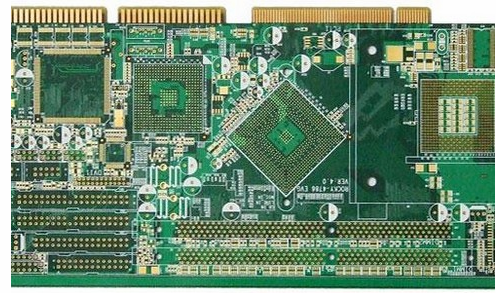How to print punching holes on the circuit board
Punching a hole on a printed circuit board is a mechanical operation like drilling a hole. However, it is not as good as drilling on hole diameter accuracy, hole wall smoothness, and delamination of land and bottom plate. In general, large holes are easier to punch than small holes. For example, for strengthened paper substrates with holes smaller than 0.9mm and strengthened glass cloth substrates with holes smaller than 1.2mm, punching failure is very common.
Therefore, the load of the automatic punching machine depends on the type of substrate and their cutting force. The cutting force of the paper substrate is 1200 psi (), and the cutting force of the epoxy glass substrate is 20000 psi. Therefore, the paper substrate should be able to withstand a pressure of 16t. In order to improve the full coefficient, 32t withstand pressure is often used.

Epoxy glass substrates have 70% higher compression resistance than paper phenylester substrates, and even simple boards require high compression resistance. When the automatic punching machine, the edge of the copper foil always rises. Therefore, it is not advisable to have circuits on both sides of the board, which will cause the pads to fall off.
In addition, if the distance between the holes is too small, cracks may appear. In this case, the operating procedure should be changed, and the copper foil should not be etched before punching. In this way, the copper foil can provide reinforcement and help avoid cracks. It is used in large-volume consumer printed circuit board products, and this printed circuit board uses paper phenyl ester and epoxy-based substrates.
Another disadvantage of punching is the delamination of the pad and the breakage of the substrate at the connection hole. In addition, punching will cause the formed hole to be conical and the surface is quite thick. Therefore, printed circuit boards that do not meet professional requirements have higher requirements for the smoothness of the plated through-hole surface.
In order to process accurately, there must be a precise tolerance between the drilling machine and the punching hole. Generally, for paper substrates, the punching hole should be 0.002-O. 004in larger than the drilling machine, and for glass substrates, it should be half of this tolerance. Figure 10-2 shows the difference between the drilling machine and the punching hole. Examples of required tolerances.
For paper benzoic substrates (XXX and similar types), in order to avoid chipping, the temperature needs to be pre-heated to 50-70°C before punching. Substrates like XXXPC and FR-2 can be punched at room temperature, as long as the temperature is higher than 20' degree Celsius. Non-woven strengthened glass substrates (epoxy and polyester) have good punching performance. With a die gap of 50-100μm, a smooth hole wall suitable for electroplating can be obtained.
What are the tips for operating an environmentally friendly circuit board shredder
The circuit board shredder produced by the PCB factory is currently more advanced equipment in China. This series of circuit board shredders absorb the advantages of multiple shredders and make full use of the principles of impact, shear, high-speed impact, and mutual grinding. Well-developed.
The operation of the circuit board shredder:
In the working process of the circuit board shredder, we can make the shredder work more efficient, faster and safer through some small pieces.
1. Try to choose the same kind of materials as far as possible. For example, when we tear up wood, we will always tear up the wood. If we tear the cans, we will transplant the cans. This will ensure the working effect of the shredder, and the shredded products will be more uniform. At the same time It also protects the shredder.
2. The PCB shredder is preheated and idling before starting up. Many people ignore this small detail, but it turns out that the idling preheating before the shredder works can greatly improve its working condition and service life.
3. After the shredder is finished, the material should be completely discharged before turning off the machine.
4. The lubrication work of the shredder should be done well, not only for increasing the output and production capacity, but also for the longer service life of the shredder.